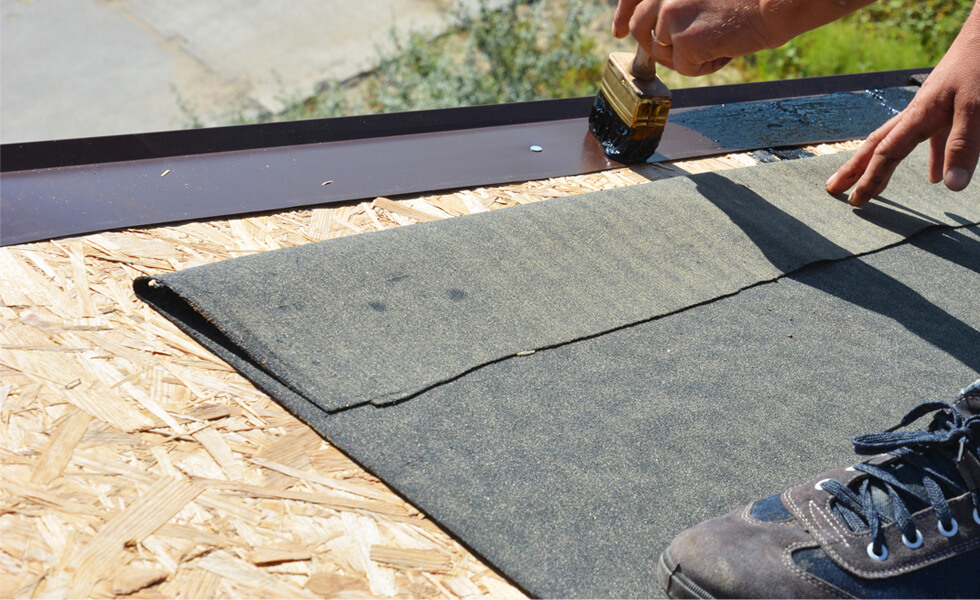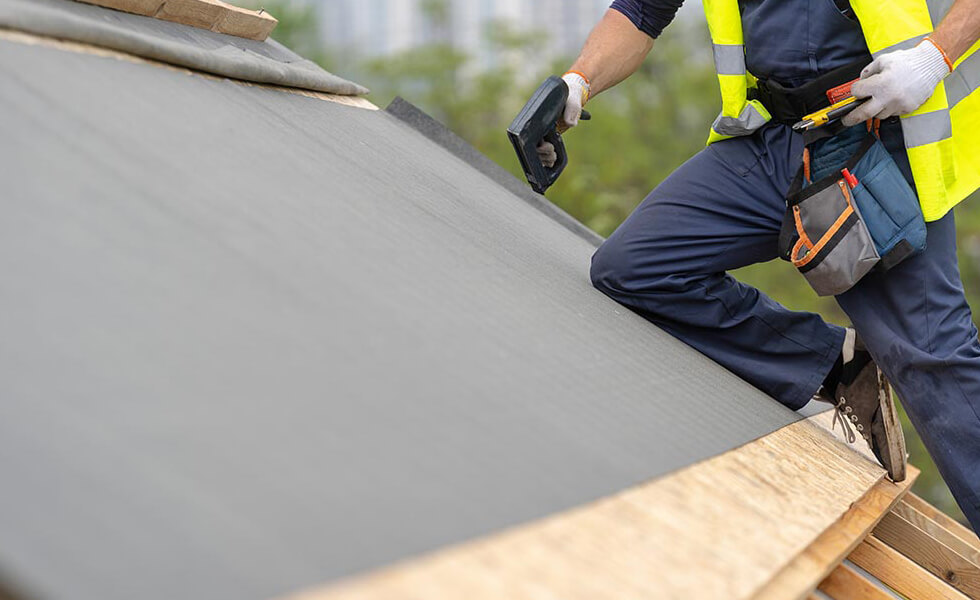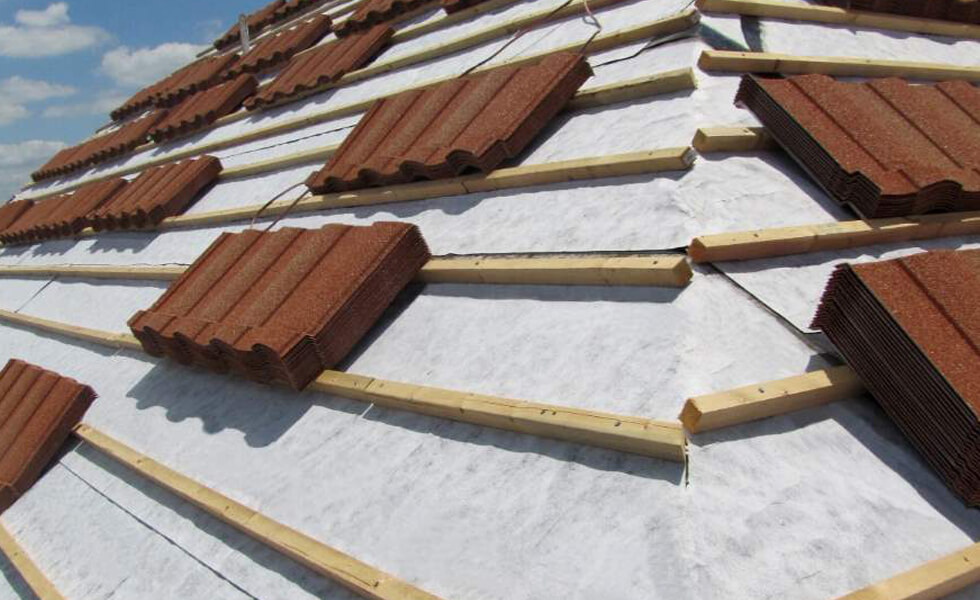
Your roof is more than just the shingles you see. A roof is a complete system of different layers that work together to protect your home from external elements. Many people are not familiar with less obvious parts that go into a whole roof system, such as the roofing underlayment. As much as you can’t see some of the details, each plays a vital role in keeping your home dry and comfortable.
What is Roofing Underlayment?
Roofing underlayment is a waterproof or water-resistant material directly placed on a roof deck before any other roofing materials are installed. It acts as a barrier that protects your home and the roof deck from leaks and the effects of harsh weather.

Roofing underlayment is available in three different types:
Asphalt-Saturated Felt
This type of roofing underlayment was the most preferred option until about 15 years ago when synthetic products’ popularity started rising. Commonly known as “tar paper” or “felt paper,” Asphalt-saturated felt is made of varying blends of bitumen (asphalt), polyester, and natural plant fibers (cellulose). It has a flexible base layer that is drenched with asphalt for water resistance.
Felt paper is often fastened with staples or attached to the deck using plastic caps. And while it may be water-resistance, asphalt-saturated felt is not waterproof. It is ideal for steeply sloped roofs where water can drain but cannot be used for flat surfaces where water can infiltrate and cause damage.
Synthetic Underlayment
Most professional roofers prefer non-bitumen synthetic underlayment or entirely synthetic underlayment. This roofing underlayment has a synthetic basemat saturated in asphalt. Fiberglass is then added to give the product superior stability and tear resistance.
Some high-quality synthetic underlayment includes scrim or coarse woven material reinforcement for added slip resistance, even when the material is wet. Non-bitumen synthetic roofing underlayment is known for being highly flexible, waterproof, durable, and mold-resistant. Compared to rubberized asphalt, synthetic underlayment is exceptionally lightweight. It is resistant to UV exposure and fungus, and long-lasting.
Rubberized Asphalt Underlayment
This type of roofing underlayment is one of the most expensive underlayment types and provides the most protection. Rubberized asphalt underlayment contains a higher concentration of rubber and asphalt polymers that makes it waterproof. This roofing underlayment usually has a special backing with a protective membrane, which gets removed before installation. The sticky back creates a watertight seal between a clean roof deck and the underlayment.
Rubberized asphalt roofing underlayment should be used at the roof’s eaves to protect the deck’s edges from water damage. Experts recommend adding it to low areas, such as valleys and protrusions, where leaks are more likely to occur.
A rubberized roofing underlayment is an excellent option for climates with extreme temperatures because they are self-adhesive, waterproof, resistant to UV rays, and flexible.

Why Do You Need Roofing Underlayment?
Moisture Barrier
Wind-driven snow and rain can trap water under your shingles, exposing your deck and the interior of your home to moisture damage, leaks, mold, and rot. Roofing underlayment provides an additional layer of protection that shingles alone can’t offer.
Weather Protection
Your shingles are the first line of defense, designed to withstand wind, reflect UV rays, and prevent water penetration. But since shingles overlap, they can easily be lifted by strong winds, making them vulnerable to blow off and water intrusion. Suppose a major weather event breaks your shingles loose. In that case, you can count on your underlayment to keep snow, ice, and rain from penetrating the roof deck and entering your home. The underlayment will provide the needed protection until the shingles are repaired or replaced.
Protection from Ice and Water Damage
Ice or snow dams can put a strain on your roof. When snow or ice on your roof melts, the water can seep into any openings in the ceiling, causing leaks, water damage, and mold. The water-resistant underlayment will seal around the frame and ensure the water drains off the roof.
Fire Safety
Shingles alone cannot meet the Class A fire rating. Using roofing underlayment that is approved by industry-standard compliances, compatible with the overlying shingles, and complies with building codes can help your roof meet a Class A fire rating.
Uniform Look for Your Shingles
Because your roof deck might not lie straight or flat, the underlayment provides a smooth, uniform surface upon which your roofing shingles can be installed. Whether you choose synthetic or felt underlayment, the layer can help prevent the “picture framing” effect, where the roof deck’s pattern or uneven areas show through your shingles. With the barrier, your roof gets a more polished finishing touch.
Bottom Line
Every roof should have a strong underlayment to stay intact from strong wind gusts, rain, snow, leaks, and water damage. Depending on where you live, your local building codes will determine whether roofing underlayment is required and which type should be installed. Get in touch with a local roofing contractor to learn more.
Roofing Underlayment Fire Test
